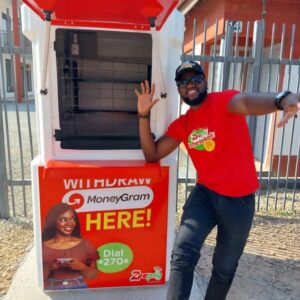Author: Aston Njovu
Co-Founder | Product Manager – Zeepay Zambia
Do you remember the last time you walked to a shop in search of an airtime scratch card? The time you visited the post office to send money to a relative in the next town.
Today, I cannot remember the last time I saw an airtime recharge card. Thanks to great innovation and agility in technology as I now conveniently recharge airtime through my mobile wallet. Convenience has further been introduced as one can globally transfer money from the comfort of their living room through a mobile device. Impressive right?
It is exciting and fills my heart with pride when I realize how Mother Zambia has witnessed immense transformation in the digital financial sector (DFS), leapfrogging herself as a frontier among the major players in the global digital sprint.
To assist you appreciate this insight. In 2009, 60.3% of adults did not have access to cell phones and a further study by the Zambia Information and Communication Authority (ZICTA) revealed that over 86% of Zambian adults did not have bank accounts then. No one could talk about mobile money except when referencing the Kenyan M-Pesa. Today our tele-density stands at over 100%. I can safely say Mr. Mwewa Chitambala’s prophecy in the Zamtel advert of circa 22 years ago is now fulfilled, “I have a dream, that one day everyone will own a cell phone”.
What factors contributed to this amazing leap? You may ask.
The leap is a function of several factors among others: investment in infrastructure (Base stations), availability of devices (Mobile phones), Agility of platforms as well as interoperability which is highly advocated and driven by the Bank of Zambia.
The above functions coupled with immense iteration have propelled growth in the digital financial ecosystem. Zambia has experienced increased financial inclusion over a decade and half. Financial inclusion is the measure of how accessible and affordable financial products and services are to individuals and business. Today 69.4% of adults are financially included as compared to 37.3% in 2009.
Disruption began in the early 2000 when Zambia Postal Services Corporation launched Swift cash (Now called Zampost Money). I remember walking to Livingstone Post office every new school term to collect my school fees then walk down to my David Livingstone High school. One could only access the swift cash by visiting a Post office branch (This is called a cash pick-up in the fintech space).
The Zampost innovation was disrupted in 2009 when ZOONA set precedence in convenient mobile financial services as they flooded the market with over 1,600 agent points across the country and processed over $1 billion by 2016. As agility and iteration is the backbone of disruption, ZOONA was struck in 2011 when the likes of MTN and Airtel launched their mobile money wallets with Zamtel joining the bandwagon later in 2017. The Mobile Network Operators (MNO’s) had an edge as they could easily create mobile wallets for their GSMA subscribers. This was a huge feat, as it meant customers could perform online (same network) Person to Person (P2P) transfers without going to an agent.
In as much as P2P transactions were exciting, the ecosystem had huge gaps to fill. Several sidelined use cases became more apparent. The ecosystem realized customers sought transfer of fund across networks, Person to Business (P2B), Business to Business (B2B), Person to Government (P2G) utility bill payment among others.
The need for agile, easily accessible and interoperable platforms was instrumental in birthing fintech’s, the likes of Zeepay Zambia and aggregators such as Kazang. Zeepay enables subscribers to create a Zeepay mobile wallet in less than five minutes regardless of their network provider (MTN, Airtel or ZAMTEL). Customers can instantly receive money from abroad including redeeming MoneyGram cash pick-up 24/7 from the comfort of their home without going to the bank or agents. Zeepay is the first fintech in Zambia enabling customers to send money to over 200 countries from their mobile phone. Others, use cases include utility bill payment, cash in and cash out, transfer to MTN, Airtel, Zamtel and banks, Netflix and amazon tokens.
This kind of disruption further drove the need to interoperate diverse Payment Service Provider (PSP) platforms. The Bank of Zambia and stakeholders introduced the National Financial Switch (NFS) managed by the Zambia Electronic Clearing House (ZECHL). The NFS is a centralized network infrastructure connecting banks and financial institutions while facilitating seamless electronic payments and interbank transactions. The network allows participating players to integrate once off, enabling customers to transfer funds from one wallet to any bank account and from bank to any mobile wallet. The interoperability has increased digital financial services patronage leading to values of 451 billion Zambia Kwacha being transacted via mobile payments in 2023.
Digital financial service providers are further propelling growth and making life easy while simultaneously addressing the United Nation’s Sustainable Development Goals.
It is safe to say that Zambia is a leapfrogged!





